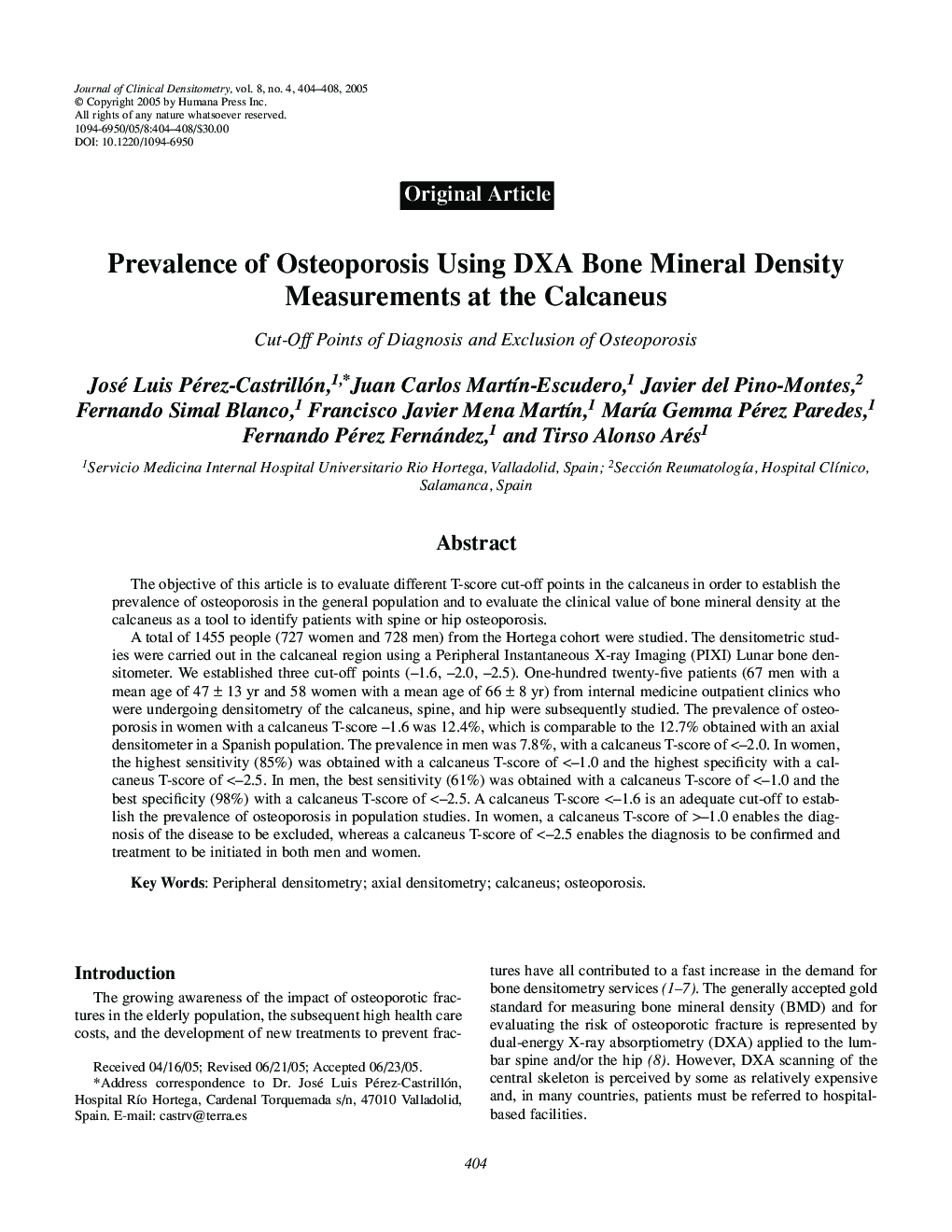| Article ID | Journal | Published Year | Pages | File Type |
|---|---|---|---|---|
| 9239580 | Journal of Clinical Densitometry | 2005 | 5 Pages |
Abstract
A total of 1455 people (727 women and 728 men) from the Hortega cohort were studied. The densitometric studies were carried out in the calcaneal region using a Peripheral Instantaneous X-ray Imaging (PIXI) Lunar bone densitometer. We established three cut-off points (â1.6, â2.0, â2.5). One-hundred twenty-five patients (67 men with a mean age of 47 ±13 yr and 58 women with a mean age of 66 ±8 yr) from internal medicine outpatient clinics who were undergoing densitometry of the calcaneus, spine, and hip were subsequently studied. The prevalence of osteoporosis in women with a calcaneus T-score â1.6 was 12.4%, which is comparable to the 12.7% obtained with an axial densitometer in a Spanish population. The prevalence in men was 7.8%, with a calcaneus T-score of <â2.0. In women, the highest sensitivity (85%) was obtained with a calcaneus T-score of <â1.0 and the highest specificity with a calcaneus T-score of <â2.5. In men, the best sensitivity (61%) was obtained with a calcaneus T-score of <â1.0 and the best specificity (98%) with a calcaneus T-score of <â2.5. A calcaneus T-score <â1.6 is an adequate cut-off to establish the prevalence of osteoporosis in population studies. In women, a calcaneus T-score of >â1.0 enables the diagnosis of the disease to be excluded, whereas a calcaneus T-score of <â2.5 enables the diagnosis to be confirmed and treatment to be initiated in both men and women.
Keywords
Related Topics
Health Sciences
Medicine and Dentistry
Endocrinology, Diabetes and Metabolism
Authors
José Luis Pérez-Castrillón, Juan Carlos MartÃn-Escudero, Javier del Pino-Montes, Fernando Simal Blanco, Francisco Javier Mena MartÃn, MarÃa Gemma Pérez Paredes, Fernando Pérez Fernández, Tirso Alonso Arés,
